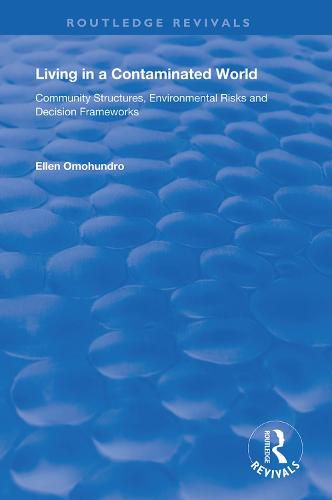Readings Newsletter
Become a Readings Member to make your shopping experience even easier.
Sign in or sign up for free!
You’re not far away from qualifying for FREE standard shipping within Australia
You’ve qualified for FREE standard shipping within Australia
The cart is loading…






Originally published in 2004. Using innovative methodology which considers both social and biophysical parameters to examine a range of mining and mineral production sites (including the controversial Superfund sites in the USA), this book focuses on how environmental regulators, local residents and other stakeholders work together to define the communities affected by environmental hazards and to assess the associated health impacts. It also questions the social factors which frame community-level decision-making about environmental risks, such as shared history, community identity, control in local decisions, distribution of power among local institutions, and participation in decisions about environmental risks and mitigation. The book argues that a better understanding of such factors would not only permit the development of more informed policies, but would also provide opportunities to improve community involvement in mitigation efforts.
$9.00 standard shipping within Australia
FREE standard shipping within Australia for orders over $100.00
Express & International shipping calculated at checkout
Originally published in 2004. Using innovative methodology which considers both social and biophysical parameters to examine a range of mining and mineral production sites (including the controversial Superfund sites in the USA), this book focuses on how environmental regulators, local residents and other stakeholders work together to define the communities affected by environmental hazards and to assess the associated health impacts. It also questions the social factors which frame community-level decision-making about environmental risks, such as shared history, community identity, control in local decisions, distribution of power among local institutions, and participation in decisions about environmental risks and mitigation. The book argues that a better understanding of such factors would not only permit the development of more informed policies, but would also provide opportunities to improve community involvement in mitigation efforts.